I can post the code if needed (its rather long) but the short of it is that I have a Ps1 script that gets info about a share (file name, creation date etc) and creates a CSV. file in a location. Then it changes all the csv to xlsx and deletes the csv. When run manually this works perfectly, when scheduled to run through task scheduler with highest permissions it creates the csv, then deletes everything, seeming to skip the convert to xlsx.
What would cause the same script to behave differently when run manually vs. through task scheduler?
CODE BELOW:
###Make sure I can Access the Share
net use \\Share\Share /user:USER PASS /persisten:no
###Move the ones that exist to Back-Up Delete Backup
Remove-Item C:\Users\USER\Desktop\OutputBk\* -recurse
Get-ChildItem -Path "C:\Users\USER\Desktop\Output" -Recurse -File | Move-Item -Destination "C:\Users\USER\Desktop\OutputBk"
### Output1
Get-ChildItem -Path \\SHARE\Output1 -Recurse | Select-Object CreationTime, LastAccessTime, LastWriteTime, Extension, Length, BaseName, PSParentPath, PSChildName, Directory, DirectoryName, DBDateAdded | Export-CSV C:\Users\USER\Desktop\Output\Output1.csv -NoTypeInformation
### Output2
Get-ChildItem -Path \\SHARE\Output2 -Recurse | Select-Object CreationTime, LastAccessTime, LastWriteTime, Extension, Length, BaseName, PSParentPath, PSChildName, Directory, DirectoryName, DBDateAdded | Export-CSV C:\Users\USER\Desktop\Output\Output2.csv -NoTypeInformation
### Output3
Get-ChildItem -Path \\SHARE\ Output3-Recurse | Select-Object CreationTime, LastAccessTime, LastWriteTime, Extension, Length, BaseName, PSParentPath, PSChildName, Directory, DirectoryName, DBDateAdded | Export-CSV C:\Users\USER\Desktop\Output\Output3.csv -NoTypeInformation
### Output4
Get-ChildItem -Path \\SHARE\ Output4 -Recurse | Select-Object CreationTime, LastAccessTime, LastWriteTime, Extension, Length, BaseName, PSParentPath, PSChildName, Directory, DirectoryName, DBDateAdded | Export-CSV C:\Users\USER\Desktop\Output\Output4.csv -NoTypeInformation
### Output5
Get-ChildItem -Path \\SHARE\ Output5 -Recurse | Select-Object CreationTime, LastAccessTime, LastWriteTime, Extension, Length, BaseName, PSParentPath, PSChildName, Directory, DirectoryName, DBDateAdded | Export-CSV C:\Users\USER\Desktop\Output\Output5.csv -NoTypeInformation
### Output6
Get-ChildItem -Path \\SHARE\ Output6 -Recurse | Select-Object CreationTime, LastAccessTime, LastWriteTime, Extension, Length, BaseName, PSParentPath, PSChildName, Directory, DirectoryName, DBDateAdded | Export-CSV C:\Users\USER\Desktop\Output\Output6.csv -NoTypeInformation
### Output7
Get-ChildItem -Path \\SHARE\ Output7 -Recurse | Select-Object CreationTime, LastAccessTime, LastWriteTime, Extension, Length, BaseName, PSParentPath, PSChildName, Directory, DirectoryName, DBDateAdded | Export-CSV C:\Users\USER\Desktop\Output\Output7.csv -NoTypeInformation
### Output8
Get-ChildItem -Path \\SHARE\ Output8 -Recurse | Select-Object CreationTime, LastAccessTime, LastWriteTime, Extension, Length, BaseName, PSParentPath, PSChildName, Directory, DirectoryName, DBDateAdded | Export-CSV C:\Users\USER\Desktop\Output\Output8.csv -NoTypeInformation
### Output9
Get-ChildItem -Path \\SHARE\ Output9 -Recurse | Select-Object CreationTime, LastAccessTime, LastWriteTime, Extension, Length, BaseName, PSParentPath, PSChildName, Directory, DirectoryName, DBDateAdded | Export-CSV C:\Users\USER\Desktop\Output\Output9.csv -NoTypeInformation
### Output10
Get-ChildItem -Path \\SHARE\ Output10 -Recurse | Select-Object CreationTime, LastAccessTime, LastWriteTime, Extension, Length, BaseName, PSParentPath, PSChildName, Directory, DirectoryName, DBDateAdded | Export-CSV C:\Users\USER\Desktop\Output\Output10.csv -NoTypeInformation
### Output11
Get-ChildItem -Path "\\SHARE\Recycle Bin - Output11" -Recurse | Select-Object CreationTime, LastAccessTime, LastWriteTime, Extension, Length, BaseName, PSParentPath, PSChildName, Directory, DirectoryName, DBDateAdded | Export-CSV C:\Users\USER\Desktop\Output\Output11.csv -NoTypeInformation
### Output12
Get-ChildItem -Path "\\SHARE\Recycle Bin - Output12" -Recurse | Select-Object CreationTime, LastAccessTime, LastWriteTime, Extension, Length, BaseName, PSParentPath, PSChildName, Directory, DirectoryName, DBDateAdded | Export-CSV C:\Users\USER\Desktop\Output\Output12.csv –NoTypeInformation
### Convert the CSV to XLSX
$workingdir = "C:\Users\USER\Desktop\Output\*.csv"
$csv = dir -path $workingdir
foreach($inputCSV in $csv){
$outputXLSX = $inputCSV.DirectoryName + "\" + $inputCSV.Basename + ".xlsx"
#### Create a new Excel Workbook with one empty sheet
$excel = New-Object -ComObject excel.application
$excel.DisplayAlerts = $False
$workbook = $excel.Workbooks.Add(1)
$worksheet = $workbook.worksheets.Item(1)
### Build the QueryTables.Add command
### QueryTables does the same as when clicking "Data » From Text" in Excel
$TxtConnector = ("TEXT;" + $inputCSV)
$Connector = $worksheet.QueryTables.add($TxtConnector,$worksheet.Range("A1"))
$query = $worksheet.QueryTables.item($Connector.name)
### Set the delimiter (, or ;) according to your regional settings
$query.TextFileOtherDelimiter = $Excel.Application.International(5)
### Set the format to delimited and text for every column
### A trick to create an array of 2s is used with the preceding comma
$query.TextFileParseType = 1
$query.TextFileColumnDataTypes = ,2 * $worksheet.Cells.Columns.Count
$query.AdjustColumnWidth = 1
### Execute & delete the import query
$query.Refresh()
$query.Delete()
### Save & close the Workbook as XLSX. Change the output extension for Excel 2003
$Workbook.SaveAs($outputXLSX,51)
$excel.Quit()
}
### To exclude an item, use the '-exclude' parameter (wildcards if needed)
remove-item -path $workingdir -exclude *Crab4dq.csv
### Rename Output1
$xlspath = "C:\Users\USER\Desktop\Output\Output1.xlsx"
$xldoc = new-object -comobject Excel.application
$xldoc.Visible = $false
$xldoc.DisplayAlerts = $false
$workbook = $xldoc.Workbooks.Open($xlspath )
$worksheet = $workbook.worksheets.item(1)
$worksheet.name = "1"
$workbook.Save()
$workbook.Close()
$xldoc.Quit()
### Rename Output2
$xlspath = "C:\Users\USER\Desktop\Output\Output2.xlsx"
$xldoc = new-object -comobject Excel.application
$xldoc.Visible = $false
$xldoc.DisplayAlerts = $false
$workbook = $xldoc.Workbooks.Open($xlspath )
$worksheet = $workbook.worksheets.item(1)
$worksheet.name = "2"
$workbook.Save()
$workbook.Close()
$xldoc.Quit()
### Rename Output3
$xlspath = "C:\Users\USER\Desktop\Output\Output3.xlsx"
$xldoc = new-object -comobject Excel.application
$xldoc.Visible = $false
$xldoc.DisplayAlerts = $false
$workbook = $xldoc.Workbooks.Open($xlspath )
$worksheet = $workbook.worksheets.item(1)
$worksheet.name = "3"
$workbook.Save()
$workbook.Close()
$xldoc.Quit()
### Rename Output4
$xlspath = "C:\Users\USER\Desktop\Output\Output4.xlsx"
$xldoc = new-object -comobject Excel.application
$xldoc.Visible = $false
$xldoc.DisplayAlerts = $false
$workbook = $xldoc.Workbooks.Open($xlspath )
$worksheet = $workbook.worksheets.item(1)
$worksheet.name = "4"
$workbook.Save()
$workbook.Close()
$xldoc.Quit()
### Rename Output5
$xlspath = "C:\Users\USER\Desktop\Output\Output5.xlsx"
$xldoc = new-object -comobject Excel.application
$xldoc.Visible = $false
$xldoc.DisplayAlerts = $false
$workbook = $xldoc.Workbooks.Open($xlspath )
$worksheet = $workbook.worksheets.item(1)
$worksheet.name = “5"
$workbook.Save()
$workbook.Close()
$xldoc.Quit()
### Rename Output6
$xlspath = "C:\Users\USER\Desktop\Output\Output6.xlsx"
$xldoc = new-object -comobject Excel.application
$xldoc.Visible = $false
$xldoc.DisplayAlerts = $false
$workbook = $xldoc.Workbooks.Open($xlspath )
$worksheet = $workbook.worksheets.item(1)
$worksheet.name = "6"
$workbook.Save()
$workbook.Close()
$xldoc.Quit()
### Rename Output7
$xlspath = "C:\Users\USER\Desktop\Output\Output7.xlsx"
$xldoc = new-object -comobject Excel.application
$xldoc.Visible = $false
$xldoc.DisplayAlerts = $false
$workbook = $xldoc.Workbooks.Open($xlspath )
$worksheet = $workbook.worksheets.item(1)
$worksheet.name = "7"
$workbook.Save()
$workbook.Close()
$xldoc.Quit()
### Rename Output8
$xlspath = "C:\Users\USER\Desktop\Output\Output8.xlsx"
$xldoc = new-object -comobject Excel.application
$xldoc.Visible = $false
$xldoc.DisplayAlerts = $false
$workbook = $xldoc.Workbooks.Open($xlspath )
$worksheet = $workbook.worksheets.item(1)
$worksheet.name = "8"
$workbook.Save()
$workbook.Close()
$xldoc.Quit()
### Rename Output9
$xlspath = "C:\Users\USER\Desktop\Output\Output9.xlsx"
$xldoc = new-object -comobject Excel.application
$xldoc.Visible = $false
$xldoc.DisplayAlerts = $false
$workbook = $xldoc.Workbooks.Open($xlspath )
$worksheet = $workbook.worksheets.item(1)
$worksheet.name = "9"
$workbook.Save()
$workbook.Close()
$xldoc.Quit()
### Rename Output10
$xlspath = "C:\Users\USER\Desktop\Output\Output10.xlsx"
$xldoc = new-object -comobject Excel.application
$xldoc.Visible = $false
$xldoc.DisplayAlerts = $false
$workbook = $xldoc.Workbooks.Open($xlspath )
$worksheet = $workbook.worksheets.item(1)
$worksheet.name = "10"
$workbook.Save()
$workbook.Close()
$xldoc.Quit()
### Rename Output11
$xlspath = "C:\Users\USER\Desktop\Output\Output11.xlsx"
$xldoc = new-object -comobject Excel.application
$xldoc.Visible = $false
$xldoc.DisplayAlerts = $false
$workbook = $xldoc.Workbooks.Open($xlspath )
$worksheet = $workbook.worksheets.item(1)
$worksheet.name = "11"
$workbook.Save()
$workbook.Close()
$xldoc.Quit()
### Rename Output12
$xlspath = "C:\Users\USER\Desktop\Output\Output12.xlsx"
$xldoc = new-object -comobject Excel.application
$xldoc.Visible = $false
$xldoc.DisplayAlerts = $false
$workbook = $xldoc.Workbooks.Open($xlspath )
$worksheet = $workbook.worksheets.item(1)
$worksheet.name = "12"
$workbook.Save()
$workbook.Close()
$xldoc.Quit()
Thanks,
